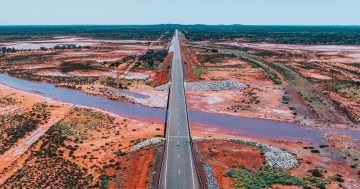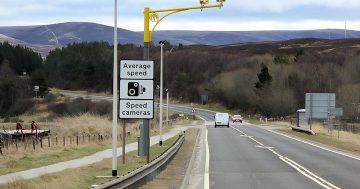
The number of responses to the My Country Road survey increased by more than 75 per cent from the 4000 responses to the 2021 survey. Photo: FiledIMAGE.
More than 7000 Victorians have identified the top issues, most dangerous roads and intersections plaguing regional areas of the state in RACV’s recent survey.
The Royal Automobile Club of Victoria (RACV) has released the results of its My Country Road survey, its intention being to use the data so the State Government and local councils are encouraged to provide safer regional roads.
Head of Policy James Williams said the survey’s data indicated the condition of regional roads had become a major safety concern for Victorians.
“The number of responses received is a strong indicator that Victorians are concerned about safety on regional roads and are calling for urgent improvement,” said Mr Williams. “Sixty per cent of survey participants think that improving road surfaces should be the priority road safety solution.
“While in 2021, dangerous driver behaviour was the biggest safety concern on regional roads, this year poor road conditions received more than double the number of responses as dangerous driver behaviour.
“Six of the top roads identified in the 2021 survey appear again this year, including the Melba Highway, Bass Highway, Bacchus Marsh Road, Phillip Island Road, Warburton Highway, and the junction of the Midland Highway and Howard Street in Epsom.
“Sixteen of the 21 most dangerous roads identified in the 2021 survey received upgrades and improvements by government; but more work needs to be undertaken to improve the safety of regional roads.”
Potholes and poor road condition were the top issues identified; the Melba Highway from Coldstream to Yea received the most responses regarding safety concerns, followed by Tylden-Woodend Road from Woodend to Tylden, Kilmore Road from Monegeetta to Gisborne, and the Goulburn Valley Highway from Nagambie to Shepparton.
The most dangerous intersection in regional Victoria was identified as the junction of the Midland Highway and Howard Street in Epsom, north of Bendigo.
Around 14 per cent of participants supported ‘a lower or more appropriate speed limit’ as a measure to improve road safety. That response rose to 56 per cent on the top 12 worst roads, highlighting that many Victorians believe reducing the speed on highly dangerous roads is an appropriate approach.
The survey also asked respondents what they think of electric vehicles (EVs) and if there are any barriers to uptake. Results showed 36 per cent of participants have considered buying an EV, while seven per cent of the survey participants are current EV owners.
“The top two reasons participants gave for deciding not to drive an EV were that they are currently too expensive to purchase and the limited battery range,” said Mr Williams.
“Regional Victorians have a preference for more charging stations at service stations and rest stops.”
- Top issues participants identified as contributing to how safe the roads are:
- Potholes/road condition (64%)
- Dangerous behaviours of other drivers (eg speeding, erratic driving) (32%)
- Narrow lanes/road (29%)
- Intersection safety issues (26%)
- Limited overtaking opportunities. (24%)
- State-wide top voted solutions:
- Improve road surface (60%)
- Wider shoulders (edges of road) (23%)
- Wider lanes (15%)
- A lower/more appropriate speed limit (14%)
- Clear trees/vegetation/other obstructions (13%)
- Intersection safety improvements (12%)
- State-wide stats:
- 56 per cent of participants believe the speed limit on the top 12 most dangerous roads should be reduced
- 61 per cent of participants identified locations where they believe the 90+ km/h speed limit should be 80/km/h or below
- 78 per cent of responses identified a location to be dangerous or very dangerous
- Northern Region received the highest response rate, followed by the Southwestern Region.
- The following roads received the most responses:
- Melba Hwy, Coldstream to Yea (B300)
- Tylden-Woodend Road, Woodend to Tylden (C317)
- Kilmore Road, Monegeetta to Gisborne (C708)
- Goulburn Valley Hwy, Nagambie to Shepparton (A39)
- Princes Hwy, Warrnambool to Portland (A1)
- Western Hwy, Trawalla to Beaufort (A8)
- Bass Hwy, Jam Jerrup to Leongatha (M420/B460)
- Princes Hwy, Colac to Stonyford (A1)
- Princes Hwy, Stratford to Bairnsdale (A1)
- Great Alpine Road, Bairnsdale to Wangaratta (B500)
- Bacchus Marsh Road, Balliang to Lara (C704)
- Phillip Island Road, Phillip Island (B420).






